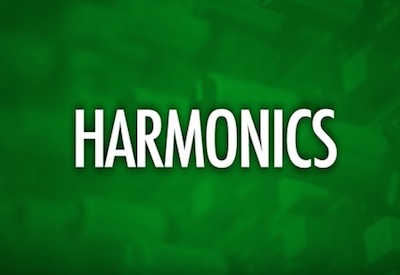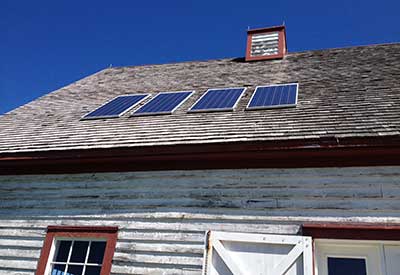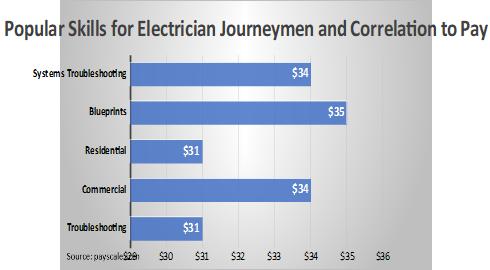Fundamentals of Harmonic Distortion in a World of Rising Non-Linear Loads

May 7, 2018
By Owen Hurst
With a focus this month of power quality, test and measurement, it seems prudent to take a minute to return to the basics for understanding harmonic distortion, particularly as the use of items with non-linear loads continues to increase.
Harmonics have been around since the first AC generator was turned on over 100 years ago. However, harmonics were initially not an issue as they very minor over linear loads. It wasn’t until the 1960s that the impact of harmonic distortion became apparent. This is confirmed by V.J. Gosbell, an associate professor at the University of Wollongong who said, “Harmonic distortion is not generally due to the operation of the power system, and was largely absent before the 1960s. At about this time, a different type of customer load with electronic power supplies became popular.”[1] These new products, such as computers and household appliances with electronic controls, had a non-linear load, and if we consider how many items we now use with electronic control it is easy to see how harmonic distortion has become a major issue.
Variable frequency drives (VFDs) also cause a non-linear load that can create harmonic distortion for manufacturing and industrial applications as well.

But first, let’s just step back and take a brief look at what exactly harmonic distortion is.
The easiest way to understand harmonic distortion is to consider the differences in linear and non-linear loads. If we have a standard AC source and a load draw that is linear the draw current will be sinusoidal in nature and for the most part does not disrupt the waveform (See fig.1). For ideal operation the draw does not create a distorted waveform but as mentioned is sinusoidal.

However, if the load draw is non-linear (such as with electronic controls) the waveform is distorted and no longer sinusoidal even though it is drawing from a sinusoidal source (See fig.2). In reality the complexity of the fundamental wave is not important, it is just an element of multiple waveforms that are called harmonics.
Harmonics therefore have frequencies that are integer multiples of the waveform’s frequency. To provide an example on a “60Hz fundamental waveform, the 2nd, 3rd, 4th, and 5th harmonic components will be at 120Hz, 180Hz, 240Hz, and 300Hz respectively.
Thus, harmonic distortion is the degree to which a waveform deviates from its pure sinusoidal values as a result of the summation of all these harmonic elements.”
Important to note here is that harmonics should not be confused with spikes, dips, impulses, oscillations or other forms of transients.
Now that we have identified what harmonics are we can consider how they are measured, which inevitably is the determining factor for identifying if harmonic distortion is causing negative effects on the system. To do this it is necessary to measure total harmonic distortion (THD). THD “is the summation of all harmonic components of the voltage or current waveform compared against the fundamental component of the voltage or current wave.”[5] This can be calculated using a standard mathematical equation, or more often is determined using test and measurement devices that perform the calculations for you. Either way, the higher the percentage the more harmonic distortion on the signal.
Although there are no enforced standards for harmonic distortion they have received a good deal of attention and many utilities have their own regulations which tend to follow the “IEEE Recommended Practices and Requirements for Harmonic Control in Electric Power Systems” (IEEE std. 519-1992).
Standard 519 by the IEEE notes that “computers and allied equipment, such as programmable logic controllers, frequently require ac sources that have no more than 5% harmonic voltage distortion factor, with the largest single harmonic being no more than 3% of the fundamental voltage. Higher levels of harmonics result in erratic, sometimes subtle, malfunctions of the equipment that can, in some cases, have profound consequences.”
Although the standard is voluntary, it is an extremely valuable guideline that has been adopted by many utility companies across the country. With overall harmonic distortion lower than 5%, and no one harmonic registering higher than 3% equipment damage or malfunction is unlikely.

However, if harmonic distortion is higher there is the potential for costly equipment damage and potentially dangerous situations for employees. “High levels of harmonic distortion can cause such effects as increased transformer, capacitor, motor or generator heating, misoperation of electronic equipment, incorrect readings on meters, misoperation of protective relays and interference with telephone circuits.”
Harmonic distortion can substantially limit the life cycle of equipment and potentially lead to outright system failure, resulting in additional costs for equipment replacement and loss of revenue due to potential shutdowns. Further, in rare cases, the heat generated in motors and drives has the potential to cause fires, which is obviously a safety hazard.
So, it is critically important to ensure that measurements of harmonics are undertaken and that any harmonic distortion that presents potential issues are addressed. There are several ways to mitigate harmonic distortion, the most common being the installation of a harmonic filter which shunts or absorbs specific harmonics from the power supply. Another potential resolution is a Pulse Width Modulated (PWM) rectifier which can eliminate a number of harmonics to gain acceptable levels.
Harmonic distortion is not going to go away, and we continue to increase our use of items with non-linear load draws increasing issues with harmonic distortion that will inevitably require more direct attention from regulatory bodies.
Owen Hurst is Managing Editor of EIN’s sister publication, Panel Builder & Systems Integrator: http://panelbuildersystemsintegrator.ca
Notes
1. V.J. Gosbell. “Harmonic Distortion in the Electrical Supply System,” PQC TECH Note 3 (Power Quality Centre), 2000, p. 2
2. Total Harmonic Distortion and Effects in Electrical Power Systems, Associated Power Systems, https://www.aptsources.com/wp-content/uploads/pdfs/Total-Harmonic-Distortion-and-Effects-in-Electrical-Power-Systems.pdf
3. Total Harmonic Distortion and Effects in Electrical Power Systems
4. Power System Harmonics: A Reference Guide to Causes, Effects and Corrective Measures, Allen-Bradley, April 2001, p. 1
5. Total harmonic Distortion and Effects in Electrical Power Systems
6. Power System Harmonics, p. 3
Sources
Power System Harmonics: A Reference Guide to Causes, Effects and Corrective Measures, Allen-Bradley, April 2001, pp. 1-7
Alex baitch, M.H. Bollen and V.J. Gosbell, “The Reporting of Distribution Power Quality Surveys” CIGRE/IEEE PES International Symposium on Quality and Security of Electrical Power Delivery Systems, October 2003, pp. 48-53
Total Harmonic Distortion and Effects in Electrical Power Systems, Associated Power Systems, https://www.aptsources.com/wp-content/uploads/pdfs/Total-Harmonic-Distortion-and-Effects-in-Electrical-Power-Systems.pdf
V.J. Gosbell. “Harmonic Distortion in the Electrical Supply System,” PQC TECH Note 3 (Power Quality Centre), 2000, pp. 2-10
Images Source: http://automationwiki.com/index.php/Total_Harmonic_Distortion
















